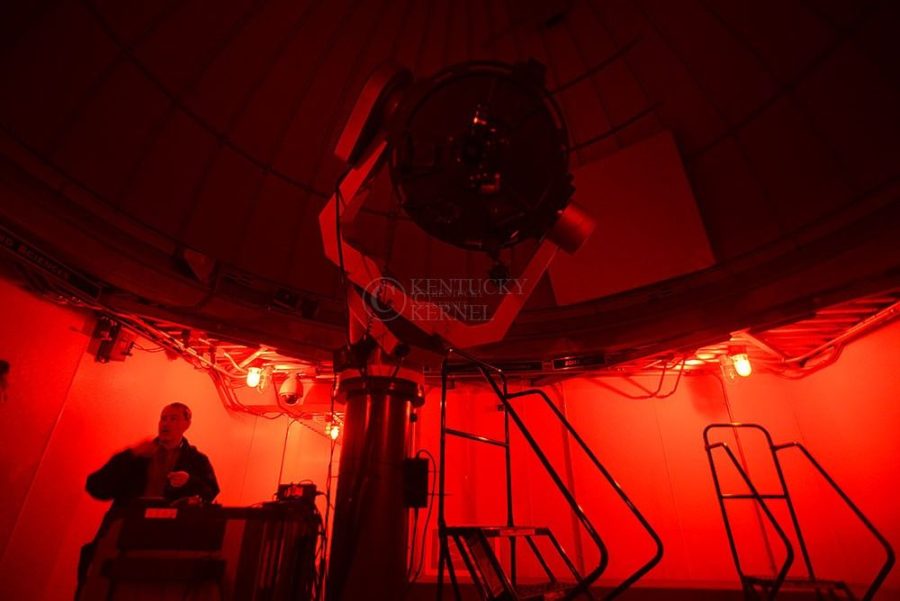Telescope opens sky to students, classes
January 15, 2014
By Laura Shrake
At the MacAdam Student Observatory, students can observe the details of the night sky amid the bright lights of UK’s campus and the bustle and sirens of Lexington.
Inside the observatory, which sits atop Parking Structure No. 2 on Rose Street, three graduate students operate the telescope and explain what the observers are looking at in the sky.
“There are so many interesting things to look at in the night sky,” physics graduate student Eckhart Spalding said. “It’s hard to choose just one.”
But if he had to choose just one, he said the planets are the most interesting to examine. The telescope can easily show the rings of Saturn and large moons if they are in the right position.
“(The telescope) has the largest telescope lens on campus,” observatory director Tim Knauer said.
The observatory is convenient and easy to use, Eckhart said.
The biggest problem visitors encounter is light pollution from being on campus and in the city. However, Eckhart said the lighting conditions are sufficient for the research he is conducting.
“The good thing about the observatory is that it’s completely run by the computer,” physics graduate student Kyle McCarthy said. “There’s not a lot of down time … the computer tells the telescope where to go and students can just walk right up to the telescope and look.”
The telescope itself cost about $35,000, and including the instruments that support and move the telescope, Knauer estimates the cost to be between $60,000 and $70,000.
“The telescope is right at the break point (between) the biggest amateur telescope and the smallest professional telescope,” said Keith MacAdam, a professor emeritus at UK.
MacAdam said the observatory established in his name has relatively secure funding through an endowment he and his wife set up.
“(The endowment) will keep this thing going,” MacAdam said. “I wanted to support this because … it’s the best way to get a knowledge, love and appreciation for physical science into the community.”
Entering its sixth year, the observatory is dedicated to teaching undergraduate students in astronomy classes.
Knauer said undergraduate students in Astronomy 191 and 192 are required to visit the observatory for 30 minutes one evening in the semester to report on what they see.
The observatory is also open to off-campus groups and students.
































































































































































